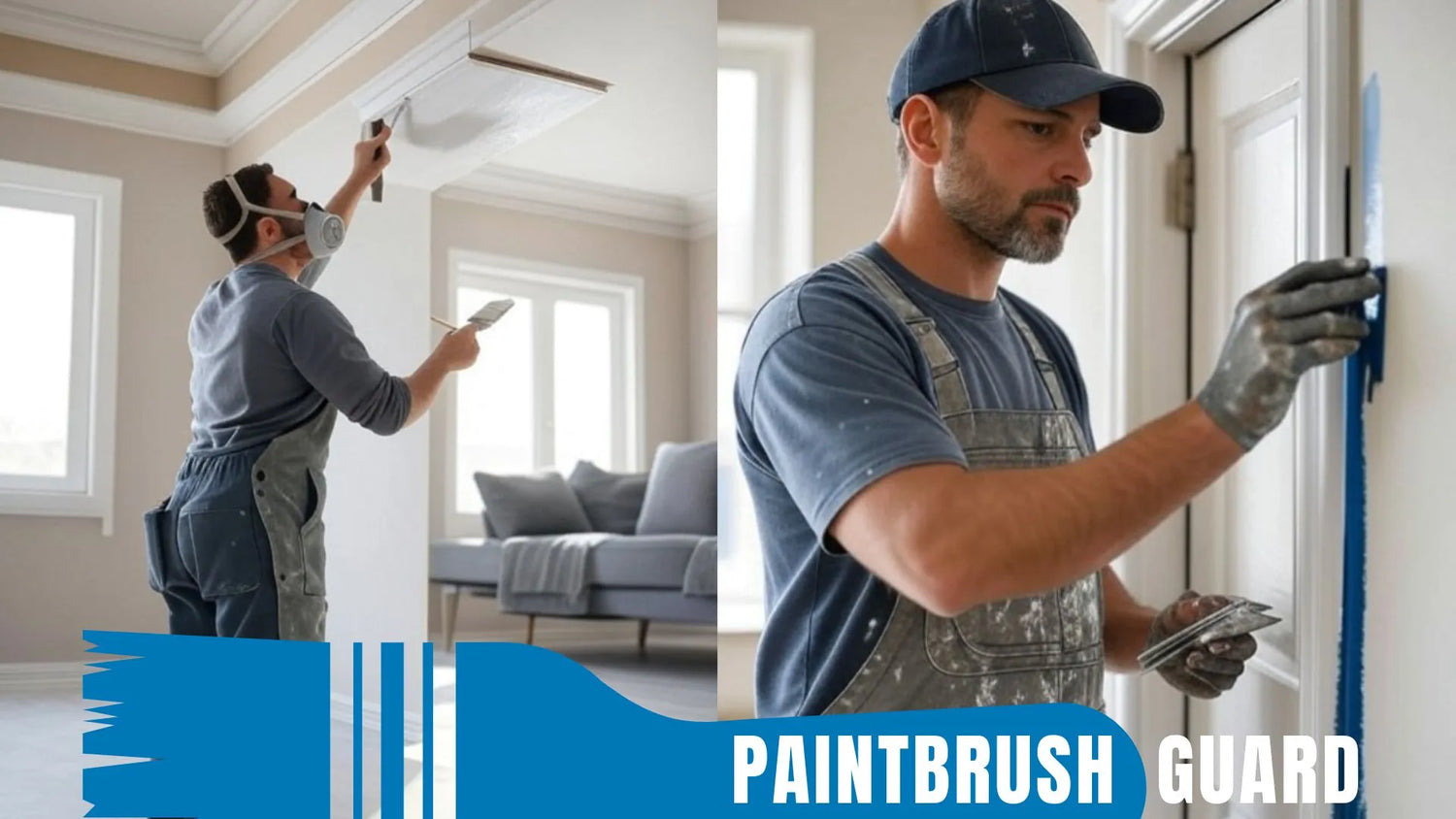
What happens if you don't sand metal before painting?
|
Time to read 6 min
|
Time to read 6 min
Failing to sand metal before painting can lead to poor adhesion, peeling, and a shorter lifespan for the finish.
Sanding metal for exterior painting creates a rough surface that helps paint bond effectively, preventing issues like flaking or rust.
Without sanding, especially on glossy or non-porous metals like aluminum or galvanized steel, the paint may not stick, resulting in an uneven or failing finish.
This article explores the consequences of skipping sanding, when it’s necessary, and how to sand metal for exterior painting to achieve a durable, professional result.
This exterior metal painting guide helps you achieving a professional long lasting paint result, preventing issues like rust, peeling or uneven finishes.
Sanding is a critical step in preparing metal surfaces for painting to ensure a lasting, high-quality finish.
Metal surfaces, such as fences, railings or machinery, are often smooth, glossy or non-porous, which can prevent paint from adhering properly.
Sanding metal for exterior painting roughens the surface, allowing paint to grip and form a strong bond.
Additionally, sanding removes contaminants like rust, dirt or old paint, which can compromise the new coat’s durability.
By prioritizing sanding metal for exterior painting, you enhance adhesion, prevent peeling and protect against environmental damage, ensuring a professional finish that lasts.
Discover 6 expert tips for exterior metal painting in coastal regions. Learn to combat rust with durable paints and prep techniques. Transform your home today!
Skipping sanding when preparing to sand metal for exterior painting leads to several issues that affect both aesthetics and functionality.
Without sanding, the paint job may fail prematurely, requiring costly rework.
Here’s what happens:
Failing to sand metal for exterior painting compromises the quality and longevity of the finish, making proper preparation essential.
Discover 6 tips for exterior metal painting on galvanized surfaces, including cleaning, priming and applying paint for a durable finish on fences or railings.
Determining when to sand metal for exterior painting depends on the surface condition and project requirements.
Sanding is not always mandatory, but specific scenarios make it critical for a successful outcome.
Consider these situations:
However, if using direct to metal (DTM) paint on clean, non-glossy surfaces, minimal sanding may be sufficient.
Always check the paint manufacturer’s guidelines to confirm sanding requirements.
Learn how long exterior paint lasts on metal, factors affecting durability, and expert tips for preparation and maintenance to extend its lifespan.
Proper sanding techniques create an ideal surface for painting metal, ensuring adhesion and durability.
To sand metal for exterior painting effectively, follow these steps for a smooth, professional finish:
Effective sanding metal for exterior painting prepares the surface for a strong, lasting paint bond.
Check out this article: What kind of paint do you use on exterior metal?
Applying paint correctly after sanding ensures a durable, attractive finish for exterior metal painting projects.
These tips maximize the benefits of sanding and prevent common issues.
Here’s how to achieve a professional result:
These tips ensure sanding metal for exterior painting leads to a flawless, long-lasting finish that enhances metal surfaces.
Learn when to prime exterior metal paint for a durable finish. Explore primer types, preparation, and application tips for metal surfaces.
Skipping sanding when preparing to sand metal for exterior painting results in poor adhesion, peeling and a reduced lifespan for the finish.
Check out this article: How long does exterior paint last on metal?
Without sanding, paint fails to bond to smooth or non-porous surfaces like aluminum or galvanized steel, leading to flaking or rust.
For instance, sanding removes rust and creates a rough texture for better paint grip. Meanwhile, proper sanding and painting techniques, such as using thin coats in dry conditions, ensure a durable result.
By prioritizing sanding metal for exterior painting and following best practices, you can achieve a vibrant, professional finish that protects and enhances metal surfaces for years.
Skipping sanding metal before painting leads to poor adhesion, causing peeling or flaking, especially on glossy or non-porous surfaces like aluminum. It also results in uneven finishes due to contaminants like rust or grease, promotes rust development on steel, reduces paint durability, and increases costs from repainting due to premature failure.
Sanding metal for exterior painting creates a rough surface for better paint adhesion, removes contaminants like rust, dirt, or old paint, and enhances durability against harsh weather. It ensures a strong bond, prevents peeling, and delivers a smooth, professional finish, especially on glossy surfaces like aluminum or galvanized steel.
Sanding is necessary for glossy or non-porous surfaces (e.g., aluminum, stainless steel), rusty steel or iron, surfaces with old or peeling paint, smooth new metal, or projects requiring high-performance finishes like outdoor furniture or railings. Minimal sanding may suffice with direct-to-metal (DTM) paint on clean, non-glossy surfaces, per manufacturer guidelines.
Clean the metal with degreaser or soapy water, scrape rust or peeling paint with a wire brush or sandpaper, use medium-grit (80–120) sandpaper for heavy rust/paint removal and fine-grit (220–400) for smoothing, sand evenly in circular or back-and-forth motions, and wipe with a tack cloth or damp rag to remove dust, ensuring a stable surface for exterior metal painting.
Paint in mild weather (50–85°F, low humidity, no rain), use high-quality brushes, foam rollers, or sprayers for even application, apply a rust-inhibiting or self-etching primer for bare metal, use multiple thin coats of paint, allowing full drying per manufacturer instructions, and inspect for uniform coverage to achieve a durable, professional exterior metal painting finish.

Learn about eco-friendly painting, tips and tutorials on house interior and exterior surfaces, so you can get started with your project without any surprices during or after your painting.

Learn how interior house paint colors influence mood with expert tips on room preference so you can pick the best colors for a harmonious home environment.
We focus on the most popular shades for each interior colors, so you don't miss no matter what color you pick.

Learn how this innovative tool allows you to store paintbrushes without the need for immediate cleaning, offering significant advantages in time savings, water conservation, reduced chemical pollution, and lower costs for supplies.